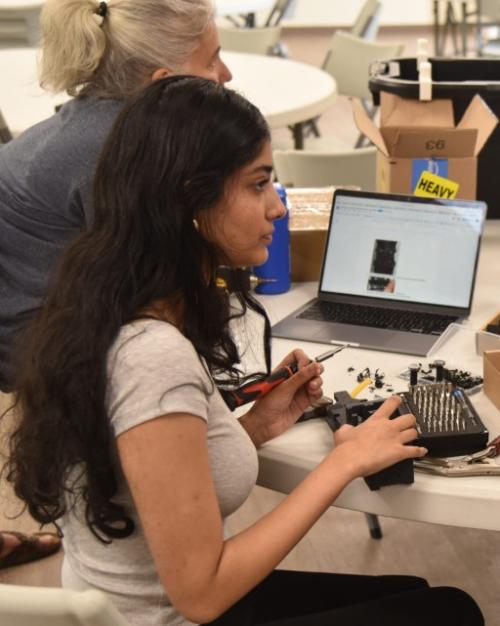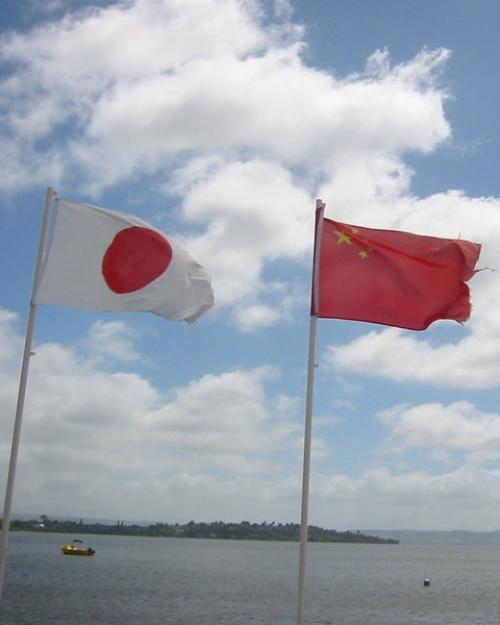How will a new multinational power grid affect people and cultures across Asia? Will artificial intelligence aid or hurt the United Nations? How can scholars take a new approach to Haudenosaunee studies? What new instruments will help us understand and harness the power of two different types of quantum materials?
To support the progress of the Cornell researchers asking these questions, the College of Arts and Sciences (A&S) has awarded five New Frontier Grants to cutting edge projects in science, social science and the humanities led by A&S faculty, some with collaborators from other colleges.
“Technologies such as AI and quantum computing are developing rapidly with the potential for profound impacts on our society. At the same time we are gaining new insight into history, communities and human endeavor. The New Frontier Grants awarded this year ensure that Cornell researchers are working at the forefront of discovery in these critical and often interconnected areas, steering their adoption and implementation toward the greater good,” said Rachel Bean, interim Dean of the College of Arts and Sciences. “This year, five new, innovative projects draw on the expertise of Arts and Sciences faculty, demonstrating our college’s characteristic zeal for interdisciplinary collaboration.
“I am thrilled to announce these ground-breaking research projects conceived by our brilliant scholars, and I am grateful for the donors whose philanthropy has been absolutely vital to the New Frontier Grant program,” she said.
To date, the New Frontier Grant program has funded 39 projects.
Projects funded in 2024 by New Frontier Grants address a wide range of issues in the humanities, social sciences and sciences. Some cross disciplinary boundaries to solve complex problems while others focus closely on mysteries of nature that have implications for future technologies.
In the project “Engaging Multi-Scalar Dynamics in Trans-Asia Infrastructures,” Shaoling Ma, associate professor of Asian studies (A&S) and Stefano Galelli, associate professor in the School of Civil and Environmental Engineering in the College of Engineering (ENG) will analyze the dynamic interconnections and divisions between human-natural systems involved in the Laos-Thailand-Malaysia-Singapore Power Integration Project. Power grids challenge researchers with multi-scalar objects of study that range from man-made infrastructures, the natural environment, narratives about displaced communities and environmental degradation to remotely-sensed data sets, requiring a combination of quantitative and qualitative approaches. The project aims to show that computational modeling helps to verify and quantify critical humanities theories, and that the latter can enrich data-driven analysis. By closing existing knowledge gaps that have failed to encapsulate the geopolitical, socioeconomic, environmental and cultural dynamics of trans-Asia energy networks, the researchers hope to help construct an alternative infrastructural future centered on people and ecology instead of profit and capital.
“Reconceptualizing Haudenosaunee Studies” aims to advance Haudenosaunee studies in linguistics, anthropology/archaeology and art/history of art while changing long-dominant methods in the field. Foregrounding involvement of community members and knowledge keepers, particularly Stephen Henhawk, research associate in linguistics (A&S) and program associate in the American Indian and Indigenous Studies Program (AIISP) in the College of Agriculture and Life Sciences, the researchers will focus on Gayogo̱hó꞉nǫɁ (Cayuga), the indigenous language and people of the Cayuga Lake region, while touching all the Haudenosaunee nations and the diaspora into which many Haudenosaunee people have been driven. Research goals include revision of the stereotyped “polysynthetic” characterization of Haudenosaunee languages; rewriting the narrative of the long-term Gayogo̱hó꞉nǫɁ habitation in the region; and re-inscription of the Gayogo̱hó꞉nǫɁ physical presence here. The project is led by John Whitman, professor of linguistics (A&S); Kurt Jordan, professor of anthropology (A&S); and Jolene Rickard, associate professor of history of art and visual studies (A&S).
Generative AI is poised to revolutionize various sectors, extending its reach into international organizations such as the United Nations. But adoption of AI in report generation for these organizations could have major implications for governance if AI is inaccurate and biased. In the project “New Frontier for AI in Global Policy Dissemination: Exploring the Use of AI for Evaluating International Organization Country Performance Reports,” Sabrina Karim, the Hardis Family Assistant Professor of government (A&S) aims to comprehensively examine the advantages and drawbacks of employing AI in policy report writing, leveraging the established infrastructure of the Gender and Security Sector Lab at Cornell, which includes undergraduate research. Karim will also compare how officials perceive reports written by AI compared to humans.
Two projects approach important research frontiers in quantum physics.
In “Development of a Time-Resolved Sagnac Interferometer for Ultra-Sensitive and Ultra-Fast Optical Studies of Spin Dynamics,” Dan Ralph, the F. R. Newman Professor of Physic (A&S), together with Gregory Fuchs, professor of applied and engineering physics (ENG), will investigate the physics of “spintronics,” trying to understand how to efficiently excite and control the dynamics of electron spins in materials where the overall equilibrium magnetism is weak or zero, i.e. ferrimagnets or antiferromagnets. These dynamics are of interest in part because the spin precession speed can be much faster than for conventional strong ferromagnets (0.1-several THz versus 0.1-10 GHz). However, studying these materials requires the development of new experimental techniques with both very high sensitivity and very high speed. The goal of the project is to develop a unique spintronics instrument capable of time resolution down to 200 fs together with the sensitivity to measure even weakly-magnetic nanometer-scale films.
In “Imaging Invisible Spin Orders with Nanoscopic Magnetic Tunneling Junctions” Xiaomeng Liu, assistant professor of physics (A&S) will explore unconventional magnetism, such as quantum spin liquids. A new frontier in quantum materials exploration, unconventional magnetism offers tantalizing quantum properties like long-range entanglement and fractionalized excitations – but probing these materials is challenging due to their vanishing magnetization. This proposal aims to develop an imaging technique that is effective in probing spin orders even in the absence of global magnetization. This approach enables atomic-resolution imaging of spin textures and excitations applicable to both conducting and insulating 2D magnetic materials. This endeavor holds promise for unraveling specific quantum properties critical for future advancements in spintronics and topological quantum computing.
Read the story on the Cornell Chronicle website.





